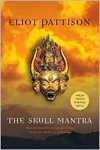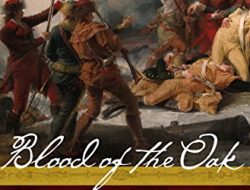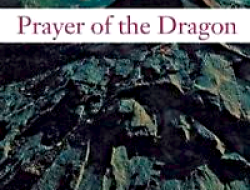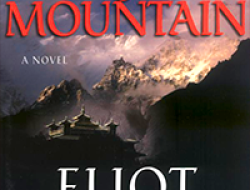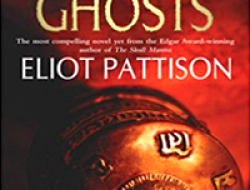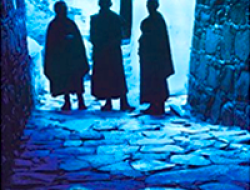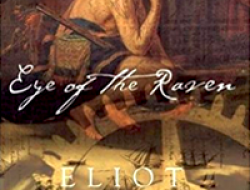Both of the series I write are set in faraway places—the Inspector Shan series rendered distant by geography, the Duncan McCallum/Bone Rattler series by time. That distance gives me a headstart as a mystery writer by providing a stage that is itself implicitly puzzling even before I introduce the players. There is no stage more mysterious to most modern readers than that of the past. We are sadly disconnected from our roots, but when we catch a scent of something familiar reaching through the fog of time, it can stir long-neglected instincts. The first time I ever reread a book immediately after finishing it I was in the fifth grade, and the book, loaned by my teacher, was Conrad Richter’s Light in the Forest, set in colonial America. I’ve been hooked on historical fiction ever since, and hooked on writing historical mysteries ever since the first Duncan McCallum novel.
When constructed by an author who stays true to period context, historical mysteries can be mesmerizing. An engaged reader can discover an inner music when historical chords are played, a resonance that is distant yet familiar, a bond that links him or her to the human experience across time. Those past years are where we come from, and knowing where we come from is indispensable to knowing whom we are. Without that knowledge we are, as Michael Crichton observed, just a leaf that doesn’t know it is part of a tree. I’m not pinning disconnected facts to some sterile backdrop when I describe my settings, I am summoning the reality of our past lives to breath life into flesh and blood characters who are recognizable to modern readers. Ultimately I am tapping into the DNA in all of us—and trust me, that DNA that makes you you was walking around in live bodies in 1765. Our truest history, our most important history, isn’t in books, it is in our blood.
By its nature the historical mystery thus offers multiple layers of mystery, as the enigmas of the author’s plot overlay the mystery of the historical setting. Umberto Eco ensnares his readers as readily with the arcanum of his ancient abbey in The Name of the Rose as he does with the question of why one Franciscan wants to drown another in a barrel of blood. When I send my characters to 18th century Philadelphia, I want that remarkable colonial capital to be so alive it breaths like another character in my tale. I want my readers to hear hoofbeats on cobblestones and inhale the vivid scents wafting from herb gardens, beeswax candles, fishmonger carts and manure in timbered stables. I want them to gasp at the forest of masts on the broad Delaware, and pause, suddenly skittish, at the glimpse of the loinclothed warrior visiting from the northern forest.
I work hard to make sure the backdrops of my novels are neither cliche nor blurred. I want my readers to become, like me, students of the human mystery and the remarkable cultures that have created and sustained it. The most satisfying moments for author and reader alike arise when history and plot intersect. The motives of the confessed Iroquois murderer in one of my novels, for example, only become clear when his ancient tribal traditions are understood. It is this amalgam, this alloy of human truth and human experience across spans of time, that is the ultimate reward of reading, and writing, historical novels.
Albert Einstein once said that “The most beautiful thing we can experience is the mysterious.” I think a lot of readers are searching for that sense of wonder, to explore beyond the commonplace. The real gift of the well-executed historical mystery is that it requires the reader to stop treating the world as some familiar assumption, and confront it instead as an open question.
Both of the series I write are set in faraway places—the Inspector Shan series rendered distant by geography, the Duncan McCallum/Bone Rattler series by time. That distance gives me a headstart as a mystery writer by providing a stage that is itself implicitly puzzling even before I introduce the players. There is no stage more mysterious to most modern readers than that of the past. We are sadly disconnected from our roots, but when we catch a scent of something familiar reaching through the fog of time, it can stir long-neglected instincts. The first time I ever reread a book immediately after finishing it I was in the fifth grade, and the book, loaned by my teacher, was Conrad Richter’s Light in the Forest, set in colonial America. I’ve been hooked on historical fiction ever since, and hooked on writing historical mysteries ever since the first Duncan McCallum novel.
When constructed by an author who stays true to period context, historical mysteries can be mesmerizing. An engaged reader can discover an inner music when historical chords are played, a resonance that is distant yet familiar, a bond that links him or her to the human experience across time. Those past years are where we come from, and knowing where we come from is indispensable to knowing whom we are. Without that knowledge we are, as Michael Crichton observed, just a leaf that doesn’t know it is part of a tree. I’m not pinning disconnected facts to some sterile backdrop when I describe my settings, I am summoning the reality of our past lives to breath life into flesh and blood characters who are recognizable to modern readers. Ultimately I am tapping into the DNA in all of us—and trust me, that DNA that makes you you was walking around in live bodies in 1765. Our truest history, our most important history, isn’t in books, it is in our blood.
By its nature the historical mystery thus offers multiple layers of mystery, as the enigmas of the author’s plot overlay the mystery of the historical setting. Umberto Eco ensnares his readers as readily with the arcanum of his ancient abbey in The Name of the Rose as he does with the question of why one Franciscan wants to drown another in a barrel of blood. When I send my characters to 18th century Philadelphia, I want that remarkable colonial capital to be so alive it breaths like another character in my tale. I want my readers to hear hoofbeats on cobblestones and inhale the vivid scents wafting from herb gardens, beeswax candles, fishmonger carts and manure in timbered stables. I want them to gasp at the forest of masts on the broad Delaware, and pause, suddenly skittish, at the glimpse of the loinclothed warrior visiting from the northern forest.
I work hard to make sure the backdrops of my novels are neither cliche nor blurred. I want my readers to become, like me, students of the human mystery and the remarkable cultures that have created and sustained it. The most satisfying moments for author and reader alike arise when history and plot intersect. The motives of the confessed Iroquois murderer in one of my novels, for example, only become clear when his ancient tribal traditions are understood. It is this amalgam, this alloy of human truth and human experience across spans of time, that is the ultimate reward of reading, and writing, historical novels.
Albert Einstein once said that “The most beautiful thing we can experience is the mysterious.” I think a lot of readers are searching for that sense of wonder, to explore beyond the commonplace. The real gift of the well-executed historical mystery is that it requires the reader to stop treating the world as some familiar assumption, and confront it instead as an open question.


